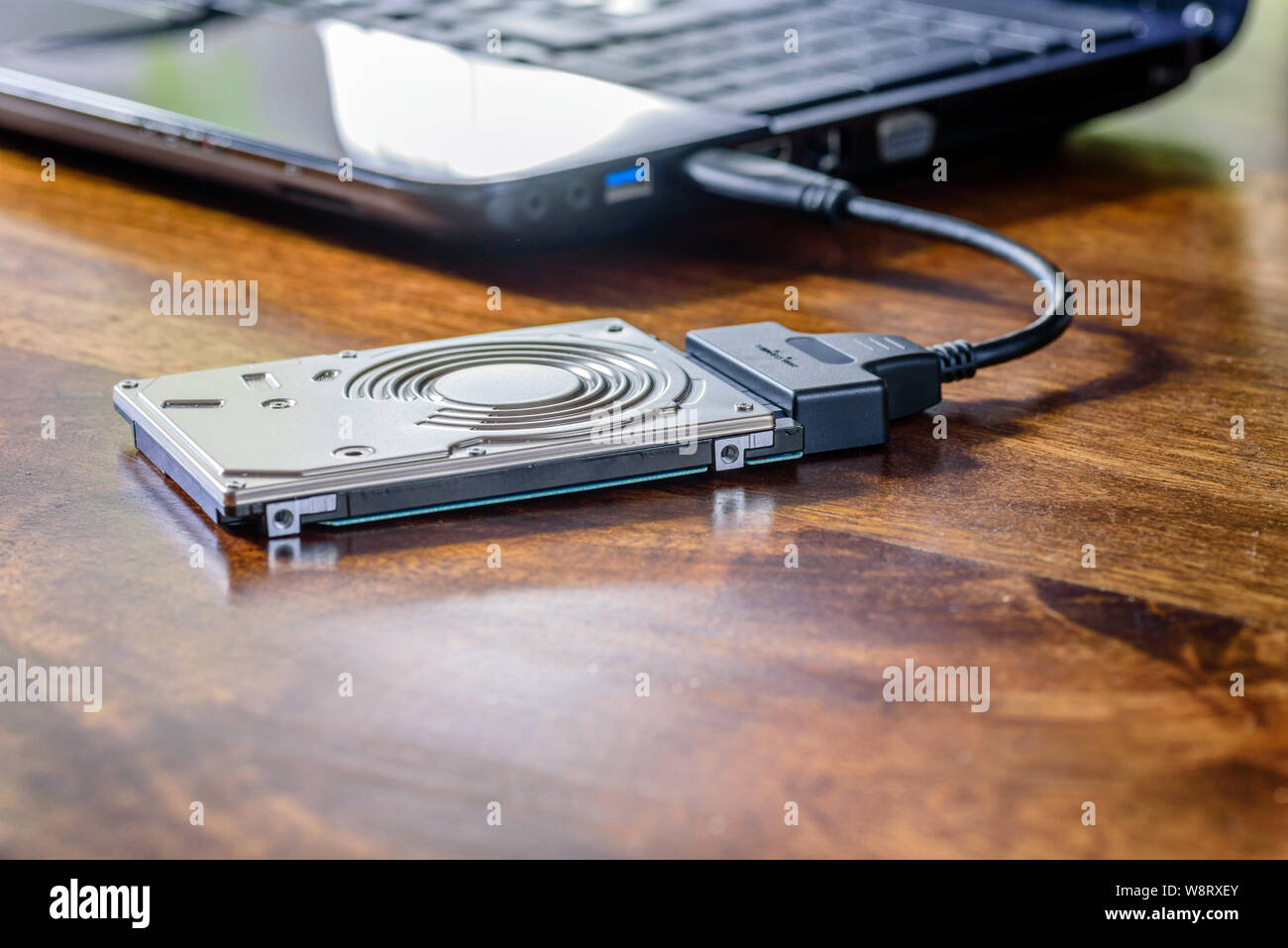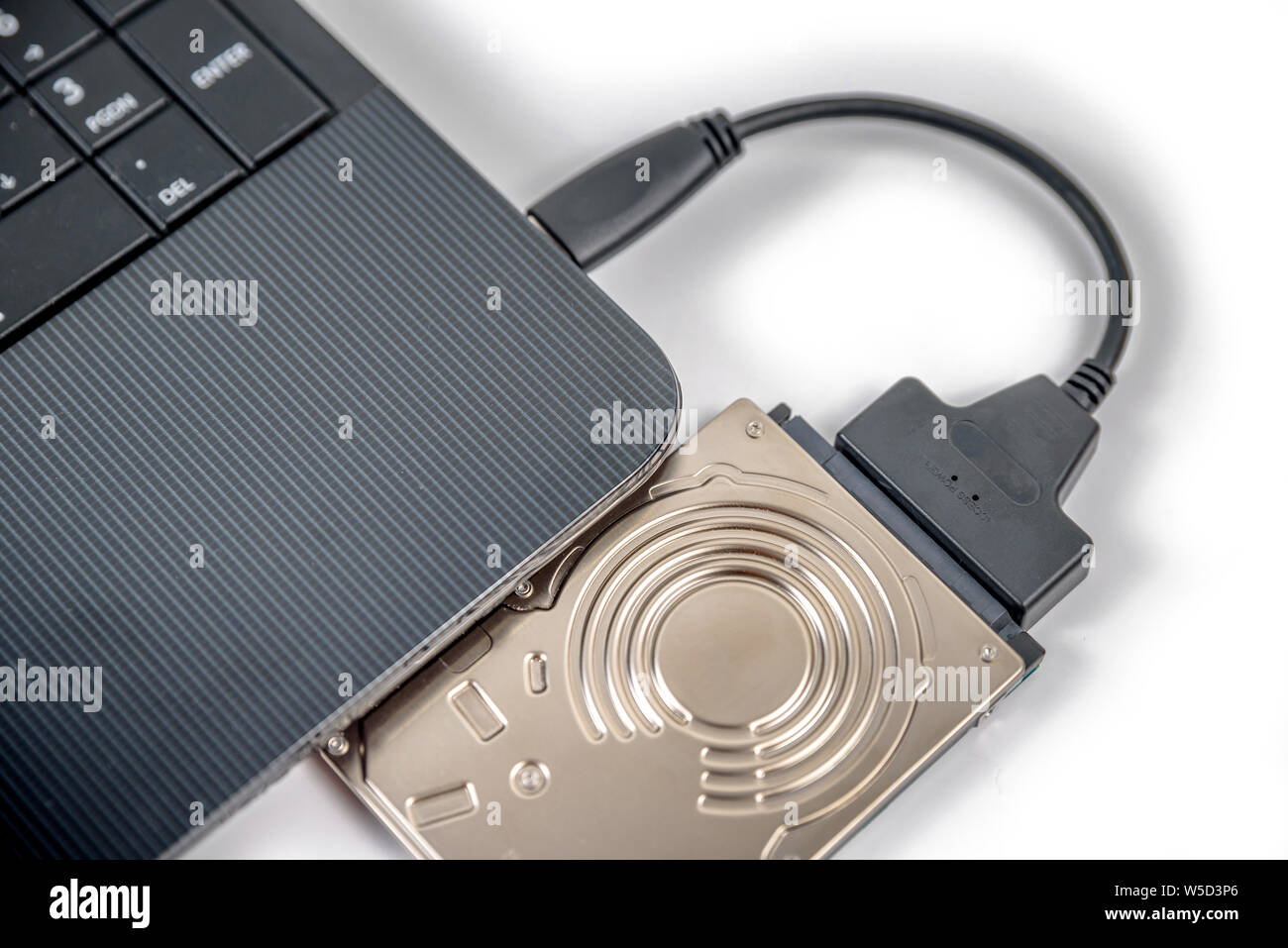Connecting an internal laptop hard drive to a USB port is simpler than you might think. It’s a handy way to access data from an old or damaged laptop.
Using an internal hard drive as an external drive can save you money and time. Instead of buying a new external hard drive, you can reuse the one from your laptop. With the right tools, you can turn your internal drive into a USB-connected external drive.
This is useful if your laptop is broken but the hard drive still works. It’s also a good way to back up data or transfer files. In this guide, we will show you how to connect your internal laptop hard drive to a USB port. Follow along for a step-by-step process to get started.
Necessary Tools And Equipment
Use a SATA-to-USB adapter to connect an internal laptop hard drive to a USB port. This setup allows easy access to files. Ensure the adapter supports your hard drive type for seamless operation.
Connecting your internal laptop hard drive to USB can be a game-changer, especially when you need quick access to files or want to repurpose an old drive. To get this done, you need specific tools and equipment. This section will guide you through everything you need to make this process smooth and efficient.List Of Required Items
To connect your internal laptop hard drive to USB, you will need:- External Hard Drive Enclosure: This is a case where you place your hard drive. It has an interface that converts the internal drive to a USB connection.
- Screwdriver Set: A small set of screwdrivers, typically Phillips-head, is necessary to open your laptop and hard drive casing.
- USB Cable: Ensure you have a compatible USB cable (usually USB 3.0 for faster data transfer).
- Anti-static Wrist Strap: This helps prevent static electricity from damaging your hard drive components.
Where To Purchase
You might wonder where to buy these tools and equipment. Here are some practical suggestions:Online Retailers: Websites like Amazon, Newegg, and eBay offer a wide range of hard drive enclosures and other necessary tools. You can compare prices and read reviews to make an informed decision.
Local Electronics Stores: Stores like Best Buy, Fry’s Electronics, or even Walmart often carry these items. You can get hands-on advice from store associates and see the products before purchasing.
Specialized Computer Shops: Local computer shops can be a treasure trove for specialized tools and equipment. They might also offer additional services like installation help.
Have you ever tried converting an old laptop hard drive into a portable USB drive? The process is straightforward with the right tools. Imagine accessing your cherished photos and important documents anytime, anywhere!
Don’t you think it’s worth investing in these tools? Transforming your old hard drive into a USB drive could be your next DIY tech project.

Credit: www.alamy.com
Preparing Your Laptop Hard Drive
Connecting an internal laptop hard drive to a USB allows for easy data access. Before you start, prepare your laptop hard drive carefully. This step is crucial for a smooth connection.
Remove Hard Drive
First, turn off your laptop and unplug it. Remove the battery if possible. Next, locate the hard drive bay. It is usually on the underside of the laptop. Unscrew the cover and gently lift it. Carefully slide the hard drive out. Handle it by the sides to avoid damage.
Check Compatibility
Ensure your hard drive is compatible with the USB adapter. Check the connection type. Most laptop hard drives use SATA connectors. Verify your USB adapter supports SATA. If your hard drive uses an IDE connector, find an adapter that supports IDE. Compatibility is key to a successful connection.
Choosing The Right Usb Adapter
Choosing the right USB adapter is crucial for connecting your internal laptop hard drive to a USB port. A good adapter ensures your hard drive functions efficiently and transfers data quickly. Let’s dive into the types of adapters available and the factors to consider when selecting one.
Types Of Adapters
There are several types of USB adapters you can choose from. Each type has its unique features and benefits.
SATA to USB: This adapter connects SATA hard drives to USB ports. It’s common and widely used.
IDE to USB: This adapter is for older hard drives. IDE adapters are less common but still available.
Combo Adapters: These adapters connect both SATA and IDE hard drives. They offer flexibility for different hard drives.
Factors To Consider
Several factors are important when choosing a USB adapter. These factors help ensure compatibility and performance.
Compatibility: Ensure the adapter is compatible with your hard drive type. Check the specifications carefully.
Speed: Look for adapters that support USB 3.0 or higher. Faster speeds mean quicker data transfer.
Power Supply: Some hard drives need external power. Check if the adapter provides adequate power.
Quality: Choose adapters from reputable brands. Quality adapters last longer and perform better.
Price: Compare prices but don’t compromise on quality. A good adapter is worth the investment.

Credit: www.youtube.com
Connecting The Hard Drive To The Adapter
Connecting an internal laptop hard drive to a USB adapter can be a simple task. This process allows you to access data from your old hard drive. You can use the drive as an external storage device. Follow these steps to complete the connection.
Step-by-step Instructions
First, gather the necessary tools. You need a USB to SATA adapter, a screwdriver, and your internal hard drive. Ensure your laptop is off and unplugged.
Begin by removing the hard drive from the laptop. Use the screwdriver to open the laptop casing. Carefully disconnect the hard drive from the laptop.
Next, take the USB to SATA adapter. Connect the adapter to the hard drive. Ensure a secure connection. Plug the USB end of the adapter into your computer.
Turn on your computer. The hard drive should appear as an external drive. You can now access your files and data.
Common Mistakes To Avoid
Do not force the connections. This can damage the hard drive and adapter. Ensure all connections are secure but gentle.
Avoid using the hard drive without a proper casing. This protects the drive from damage. It ensures safe data transfer.
Ensure the adapter matches the hard drive type. Incorrect adapters will not work. Always check compatibility before starting.
Do not forget to safely eject the drive. This prevents data corruption. Always use the “eject” option on your computer.
Connecting To Your Computer
Easily connect your internal laptop hard drive to a USB port. Utilize a hard drive enclosure or adapter. This method allows for external use and data access.
Connecting an internal laptop hard drive to a USB port on your computer is quite simple. This process allows you to access data from an old drive or use it as extra storage. Follow these steps to ensure a smooth connection.Plugging In
First, you need an external hard drive enclosure. This device converts your internal hard drive into an external one. Insert your internal hard drive into the enclosure. Secure it with screws if needed. Next, connect the enclosure to your computer using a USB cable. Ensure both ends are firmly plugged in.Driver Installation
Your computer may need to install drivers to recognize the new device. Most modern systems do this automatically. If your computer prompts for driver installation, follow the on-screen instructions. It usually takes a few minutes. Once complete, your hard drive should appear under “This PC” or “My Computer.” If the drive does not appear, check your connections. Make sure the drive is properly seated in the enclosure. Reboot your computer if necessary. These steps usually resolve common connection issues. “`Accessing Data On The Hard Drive
Connect an internal laptop hard drive to USB for easy data access. Use a USB-to-SATA adapter to connect the drive. This method allows quick file transfers and backups.
Accessing Data on the Hard Drive So, you’ve got an old laptop hard drive lying around, and you want to access the data stored on it. Connecting your internal laptop hard drive to a USB is a great way to do this. It’s simple and cost-effective. Plus, it can be a lifesaver if your old laptop is no longer functional. Here’s how you can manage and troubleshoot accessing your data efficiently.File Management Tips
When accessing data from an old hard drive, it’s easy to get overwhelmed. Start by organizing your files into folders. This makes it easier to find what you’re looking for. Create separate folders for photos, documents, and other media. Use a consistent naming convention for your files. This could be by date, subject, or type. It will save you time in the long run. Finally, consider backing up your important files to a cloud service. This ensures you won’t lose them again.Troubleshooting Access Issues
Sometimes, connecting your hard drive to a USB might not go smoothly. If your computer doesn’t recognize the drive, check the connections. Ensure the USB cable is firmly plugged into both the hard drive and the computer. If the drive still isn’t recognized, try using a different USB port. Sometimes, a different port can make all the difference. Another common issue is the drive not showing up in File Explorer. In this case, open Disk Management to see if the drive is listed there. If it is, you might need to assign it a drive letter. Have you ever faced issues accessing data on an old hard drive? How did you resolve them? Share your tips and experiences in the comments below!Safely Disconnecting And Storing
Safely disconnecting and storing your internal laptop hard drive is crucial. It prevents data loss and physical damage. Proper handling ensures your drive’s longevity and reliability.
Proper Ejection
Before disconnecting, ensure all files are closed. Click the “Safely Remove Hardware” icon on your taskbar. Select the connected hard drive from the list. Wait for the notification that says it is safe to remove. Unplug the USB cable from your laptop carefully. Avoid pulling on the cable forcefully.
Storage Tips
Store your hard drive in a cool, dry place. Use a protective case to prevent dust and physical damage. Avoid direct sunlight and extreme temperatures. Keep the drive away from magnetic sources. Regularly check the drive for any signs of wear or damage. Handle the drive with clean, dry hands.

Credit: www.alamy.com
Frequently Asked Questions
How To Connect Hard Disk To Laptop With Usb?
To connect a hard disk to a laptop with USB, use a USB-to-SATA adapter. Plug the adapter into the hard disk and then into the laptop’s USB port. The laptop should recognize the hard disk automatically.
How To Access Files On An Old Laptop Hard Drive?
To access files on an old laptop hard drive, use a USB hard drive adapter. Connect the adapter to your new computer. The hard drive will appear as an external device. Open it to access and transfer your files.
Can You Plug An Internal Hard Drive Into A Laptop?
Yes, you can plug an internal hard drive into a laptop using a USB to SATA adapter. This allows easy data transfer.
Can I Use An Internal Hard Drive Externally?
Yes, you can use an internal hard drive externally. Use a compatible external enclosure or docking station. This allows easy access to the drive via USB or eSATA.
Conclusion
Connecting an internal laptop hard drive to USB is simple and practical. This method gives you easy access to your data. It also saves you money on new storage devices. By following the steps outlined, you can repurpose your old hard drive efficiently.
This can help with backups or extra storage. With a few tools and some patience, anyone can do it. Now you can enjoy your extra storage space quickly and easily.
